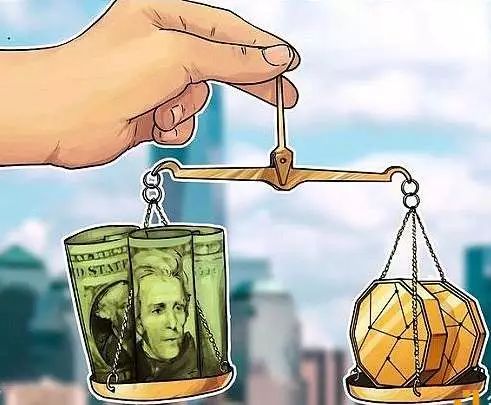Digital Currency in the Eyes of Economists – Trends: Creating a Future

Economists like to predict the future, but the accuracy is not high .
The premise of successfully predicting the future is that the predictive object itself has a law that can be mastered. According to this standard, the future of digital currency is difficult to predict .
Because digital currency has its own laws of development, this is a question worth discussing. In addition, the digital currency industry is undergoing rapid changes. So far, no proven mature theory can explain the phenomenon of digital currency. Another possible reason for the future of digital currency is that the digital currency itself has only been in existence for only 11 years, which has caused academic and regulatory attention in recent years. For such a new digital currency industry, it may be time to give more time to see its future development trend.
- I want to use the blockchain to innovate my SWIFT, but I still can't resist the subversion of the blockchain.
- God turns! The Belgian Debo hits the face of CSW and is exposed to the court.
- Horizontal resolution of the deposit certificate panorama: Will the deposit certificate become a large-scale application scenario for the blockchain?
Grass snake gray line, volts thousands of miles. Although it is very challenging to predict digital currency from the perspective of economists, we may wish to explore the future development trend of digital currency from the current development of the industry.
First, the digital currency market has returned to rationality from fanaticism . Although the digital currency market ushered in a small climax in the first half of 2019, compared with the peak of the market in 2017, whether it is from the price, trading volume, coverage of news reports, the amount of new project financing, or the addition of Bitcoin On the core data such as addresses, the speculative enthusiasm for digital currencies has been greatly reduced. In terms of capital flow and market performance, newly-joined participants prefer digital currencies such as mainstream currencies and exchange platform currencies.
After the cruel education of the rapid exchange of bulls and bears in the market, the participants gradually returned to rationality and no longer expected to be rich overnight . Participants invested more in the practicality and innovation of investment projects, and more into medium and long-term investments. In such a market, projects and companies relying on concepts and hype will gradually be eliminated, and companies with the strength to do real things will gradually dominate the market.

Second, the implementation of national regulatory measures began to take place . Since 2019, the system of “license and sandbox supervision” has been formed in the supervision of major countries, and it has begun to enter the stage of implementation from the stage of discussion and construction. In particular, stimulated by Facebook's global non-sovereign stable currency Libra incident, national regulators have to face the enormous challenges brought by digital currency. Regulation has become the decisive force in the direction of the digital currency market. At the same time, digital money industry associations and non-profit research academic organizations have begun to play an increasingly important role.
Again, the role of Stable Coin is growing . The unique pattern of Bitcoin in the digital currency world has not changed. However, before the emergence of stable currency, due to the emergence of tokens, Bitcoin has a declining market share in all digital currencies. Due to the emergence of stable coins, the speed of Bitcoin “out of favor” has been accelerated. The underlying reason is the huge volatility of bitcoin prices and the fixed nature of production, which has severely hampered the willingness of institutions and individuals to invest and pay using digital currencies. Stabilizing coins make up for the blank of Bitcoin, which is also known as the universal currency of the digital currency world. It is considered to be an important barrier for the interaction between the two worlds of digital currency and traditional finance.
Due to the huge demand for stable coins in the market, since 2017, a large number of stable coins have sprung up in the market. In the end, the USDT stood out as the dollar in the digital currency, and no one can shake its dominance in the future. Facebook's Libra program, while igniting a new round of discussion about non-sovereign stable coins, also brought regulatory attention and participation. The Central Bank Crypto Currency, also the sovereign stable currency, has also been re-introduced on the agenda of national regulators. Who can lead the stable currency market in the future? Is it the existing veteran digital currency stable currency, or is it a non-sovereign stable currency that the giants have entered into the digital currency world, or is it a looming central bank digital currency? We are currently difficult to predict, but we can be sure that the importance of stabilizing coins is increasing.

Fourth, traditional financial institutions and Internet companies have stepped into the digital currency industry . Facebook's Libra project, just the tip of the financial giant and Internet hegemony involved in the digital currency industry iceberg, is enough to attract global attention. Goldman Sachs, JPMorgan Chase, Microsoft and other giants are all out of the spotlight and are eager to try. ICE, the parent company of the New York Stock Exchange, has established a digital currency exchange. Institutions that are not convenient to directly enter the field have deployed the digital currency industry through direct or indirect investment. Singapore National Investment Corporation shares in the Coinbase exchange, one of the benchmarks in the digital currency industry.
These traditional financial and Internet companies are steadily advancing digital currency, which will bring a clean stream that cannot be ignored, which will help the standardization and healthy development of the digital currency market . Regulatory distrust of the digital currency industry will gradually change as these giants join. When one day, large institutions have become the main force of digital currency, supervision will be assured that ordinary investors will be involved in digital currency on a large scale, such as the approval of public transactions of digital currency ETF products. All of this is very worth looking forward to.

Finally, there will be more and more legitimate Security Token Offerings . In July 2019, the SEC first approved blockchain startup BlockStack to use the RegA+ method to publicly issue the digital currency BlockStack Token, which opened the prelude to the compliance STO transaction and brought a glimmer of light to the long-suffering digital currency industry. Since the regulation of countries has regulated all the issuances of ICO (Initial Coin Offering) and similar ICOs as securities issuance, digital currency issuers are frightened and afraid to touch the boundaries of securities laws.
For the issuance of digital currency, it is difficult to manage only the restrictions without diverting exports . Now that the SEC has made a good start, it is believed that more and more formal digital currencies will move toward the STO mode in the future. It is worth mentioning that in all kinds of STO, STO with asset endorsement will be more popular. The certificate issued in the market in 2017-2018 is mainly based on pure digital currency. With the huge fluctuation of the digital money market, investors begin to have mistrust of digital currency without endorsement of assets. Therefore, the digital currency with asset endorsement gradually Attract everyone's attention. Coupled with the support and guidance of the US SEC to STO, I believe that more and more certificates will be issued in the form of Asset Back Token, and then become a compliant STO and enter the financial market under supervision. .
The series of digital currencies in the eyes of economists refers to a large number of academic papers and industry materials of digital currency, trying to summarize the current research on digital currency in the field of economics from the perspective of economists, covering the main areas of digital currency. Big aspects: classification, market, exchanges, pricing, risk, regulation and trends.
The discussion and research on digital currency, like the digital currency itself, is full of controversy and challenges . This series tries to maintain a neutral perspective and balance the current views of all parties on digital currency, so that readers can have a quick and comprehensive understanding of digital currency research and discussion in the current economics field through this series.
Although we collected a lot of industry materials and academic articles before we wrote the series, we had to re-update a lot of content three months after completing the first draft. Because in just three months, many new academic research articles have emerged, and the industry is also a symbolic hotspot, such as Libra and BlockStack.
The cycle of the traditional financial industry is based on 10 years , the period of financial technology is based on the year , and the digital currency is in units of months . This kind of change is extremely fast and full of vitality, which can only be met in the digital currency field .
This confirms the words of the digital currency world: "One day in the currency circle, one year in the world" is the place where the digital currency field is full of charm.
(End of series)
Click to read the full text of the series:
Digital Currency in the Eyes of Economists: Series Preface
The digital currency in the eyes of economists – Classification: Bitcoin with no place for souls
The digital currency in the eyes of economists – market articles: will there be no leek in the currency circle?
The Digital Currency in the Eyes of Economists – The Exchange: The Glory of the King
The digital currency in the eyes of economists – price articles: ups and downs in the bubble
The digital currency in the eyes of economists – risk articles: the wind
The Digital Currency in the Eyes of Economists – Supervision: Keeping up with the times
Author: Cai Kailong
Source: Kay Jinke
We will continue to update Blocking; if you have any questions or suggestions, please contact us!
Was this article helpful?
93 out of 132 found this helpful
Related articles
- Even if it is a bull market, it will not save the competitive currency market.
- Accept Bitcoin to buy a ticket, open an exchange, Norwegian Airlines CEO loves cryptocurrency
- Getting started with blockchain | E-cash is convenient? Maybe you still don't know the legal digital currency.
- IRISnet gallops: we have to cross not just the blockchain
- Market Analysis: EOS rose, paying attention to short-term opportunities in mainstream currencies
- Will Eth 2.0 be the first public link from PoW to PoS? 丨SheKnows fifth issue
- The price of the currency plunged 44% in 20 days. Can Ethereum rise again?






